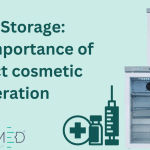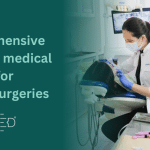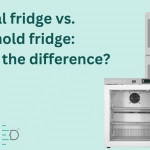Cosmetic surgery is more popular now than it has ever been. But practitioners must know how to correctly store the products they work with
There are more than 100,000 Botox injections administered in the UK each year, with that number set to rise as more and more people chose to have cosmetic surgery procedures.
This has led to an increase in the number of cosmetic surgery clinics and practitioners offering non-invasive treatments such as Botox and lip fillers.
But Botox injections should be carried out by a medical practitioner that is listed on one of four registers – BAAPS, JCCP, Save Face or BACN – proving they are suitably trained, skilled and insured.
Practitioners should also know how to correctly store the products they use and administer to patients at their cosmetic surgery clinics and this includes the use of a dedicated medial fridge.
There are several reasons for this.
Storing products at the correct temperature:
Some of the products used in non-invasive cosmetic surgery procedures must be stored within a certain temperature range. For Botox, this is between +2°C to +8°C.
The only way this temperature range can be accurately maintained is by using a dedicated medical fridge which provides unrivalled levels of temperature control and monitoring.
This is achieved with state-of-the-art thermometers that can measure the temperature inside the fridge as well as the temperature of the products being stored.
They are also fitted with alarms that sound if the temperature falls outside of the required range, allowing practitioners to intervene and save the products from damage or ruin.
Added security:
Dedicated medical fridges also provide greater levels of security than standard domestic fridges – they can be locked to prevent any unauthorised access.
They also come in two styles – glass door and solid door. The former allows practitioners to see inside the fridge without needing to open the door and risk a rise in temperature.
The latter provides added security as people cannot see what is being stored inside the fridge, mitigating the risk of theft.
How to store products in a medical fridge:
In order for the medical fridge to be able to work at its best, cosmetic surgery practitioners must store products in a certain way. This includes:
• Leave 1cm of space between products
• Ensure products do not touch the back of the fridge
• Ensure the fridge is never more than 75% full
• Clean the outside of the fridge daily
• Clean the inside of the fridge twice a month
Practitioners must also conduct a weekly stock take of the products being stored inside the medical fridge and ensure that products with the shortest shelf lift are at the front and used first.
Temperature monitoring is the key to correct storage:
Cosmetic surgery practitioners must also monitor and log the temperature of their medical fridges to ensure they do not fall outside of the minimum/maximum range.
Temperature logging should be done by a qualified and experienced practitioner at least once per day. They should record min, max and current temperatures on a log and sign their name against it.
If the temperature has fallen outside of the range at any point during the day they must intervene and take the necessary action to ensure the products inside remain safe to use.
How to choose the right medical fridge for your needs:
There are medical fridges to suit every requirement. When thinking about which best meets your needs, consider the following:
• The space you have available to install a medical fridge
• The amount of product you need to store in the fridge
• The budget you have to purchase your medical fridge
• Whether you require a glass door or a solid door
If you require any further assistance in purchasing a medical fridge for your cosmetic surgery practice, contact a member of the CoolMed team here.
Featured Products
-

Solid Door Small Refrigerator CMS29
£575.99 £479.99 excl. VAT Add to cart -

Glass Door Small Refrigerator CMG29
£623.99 £519.99 excl. VAT Add to cart -

Solid Door Small Refrigerator CMS59
£719.99 £599.99 excl. VAT Add to cart -

Glass Door Small Refrigerator CMG59
£779.99 £649.99 excl. VAT Add to cart -

Solid Door Medium Refrigerator CMS125
£1,175.99 £979.99 excl. VAT Add to cart -

Glass Door Medium Refrigerator CMG125
£1,295.99 £1,079.99 excl. VAT Add to cart -

Glass Door Large Refrigerator CMG300
£1,799.99 £1,499.99 excl. VAT Add to cart -

Solid Door Large Refrigerator CMS400
£2,159.99 £1,799.99 excl. VAT Add to cart






